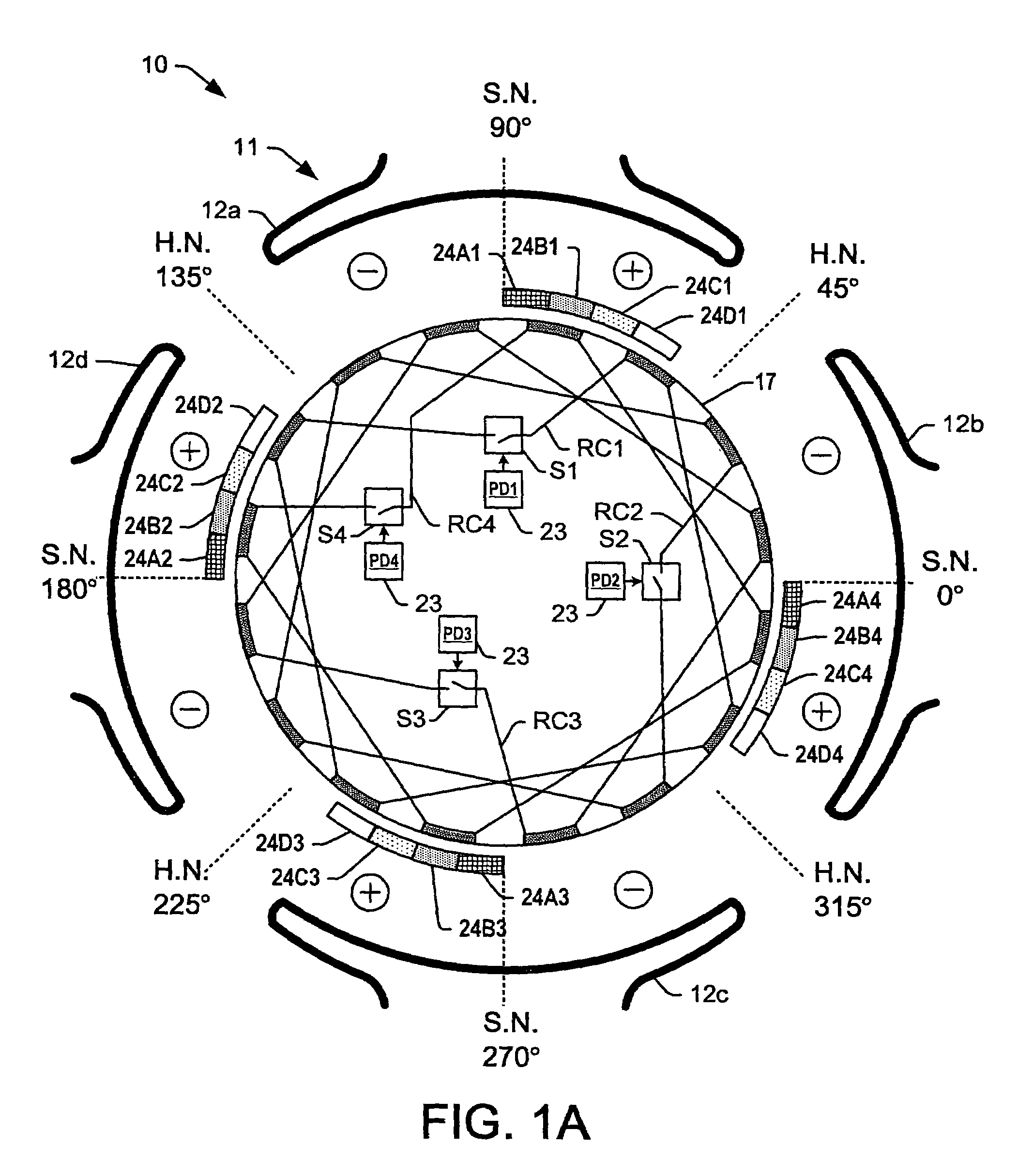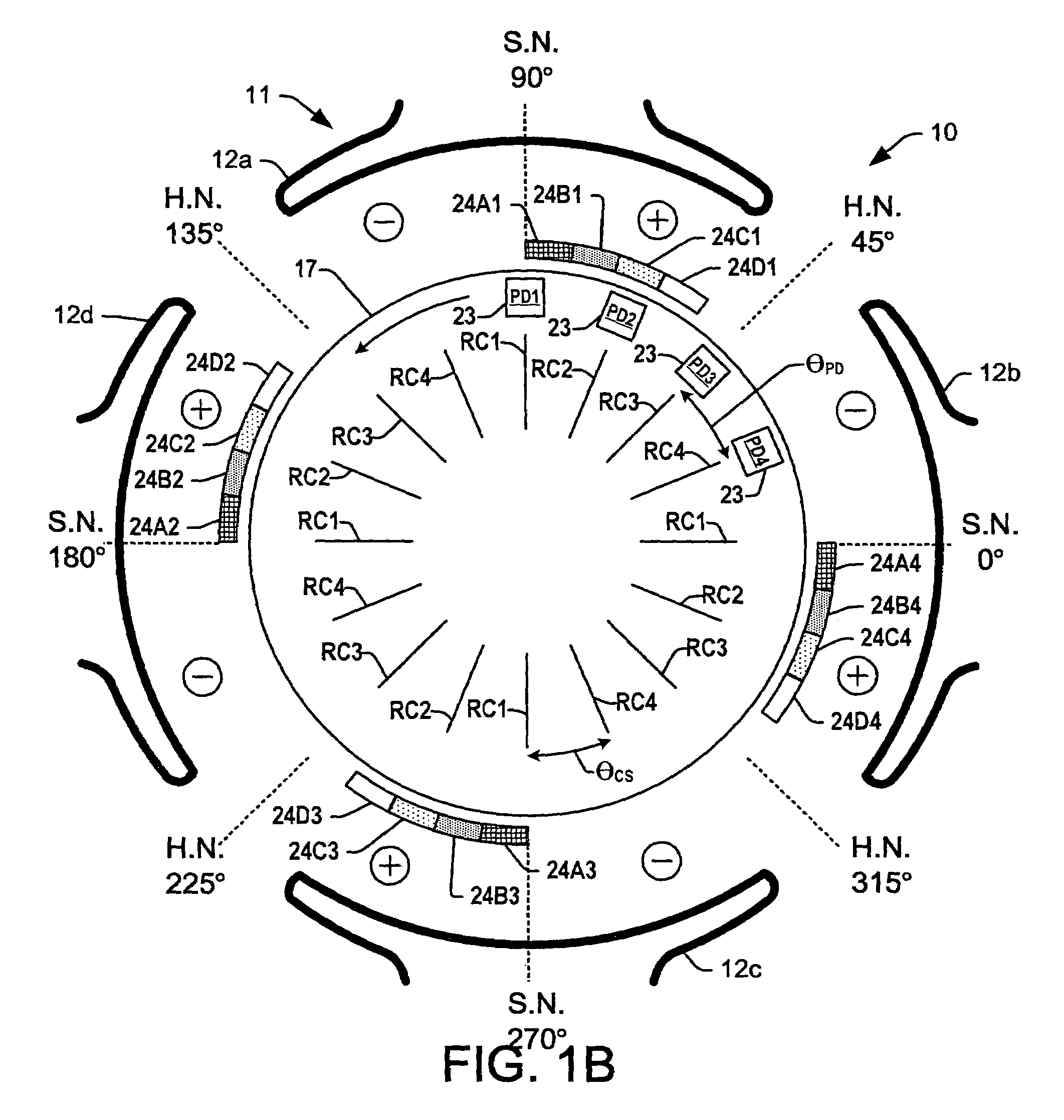Signaling and reduced torque ripple in brushless repulsion motors
a brushless repulsion motor and torque ripple technology, applied in the direction of motor/generator/converter stopper, dynamo-electric converter control, etc., can solve the problems of torque or rotation, brush and commutator wear out, and the type of repulsion motor has not been widely adopted, so as to facilitate the low cost manufacturing of high-performance blr motors and facilitate precise control of specific rotor coils. , the effect of reducing torque rippl
- Summary
- Abstract
- Description
- Claims
- Application Information
AI Technical Summary
Benefits of technology
Problems solved by technology
Method used
Image
Examples
Embodiment Construction
[0031]One or more exemplary implementations of brushless repulsion motors are hereinafter illustrated and described in accordance with the present invention, wherein like reference numerals are used to refer to like elements throughout and wherein the illustrated structures are not necessarily drawn to scale. The invention relates to improved brushless repulsion motors in which rotor-mounted detectors and stator-mounted signaling sources are more widely spaced that in previous BLR motors to facilitate the use of increased numbers of stator poles and / or rotor coil segments while allowing selective activation of single rotor coils, as well as asymmetrical stator pole structures for alleviating torque ripple. While illustrated and described hereinafter in specific embodiments using optical signaling and detector devices, other signaling components and detectors can be used, including but not limited to optical devices, magnetic devices, RF devices, etc., wherein all such variant implem...
PUM
 Login to View More
Login to View More Abstract
Description
Claims
Application Information
 Login to View More
Login to View More - R&D
- Intellectual Property
- Life Sciences
- Materials
- Tech Scout
- Unparalleled Data Quality
- Higher Quality Content
- 60% Fewer Hallucinations
Browse by: Latest US Patents, China's latest patents, Technical Efficacy Thesaurus, Application Domain, Technology Topic, Popular Technical Reports.
© 2025 PatSnap. All rights reserved.Legal|Privacy policy|Modern Slavery Act Transparency Statement|Sitemap|About US| Contact US: help@patsnap.com



